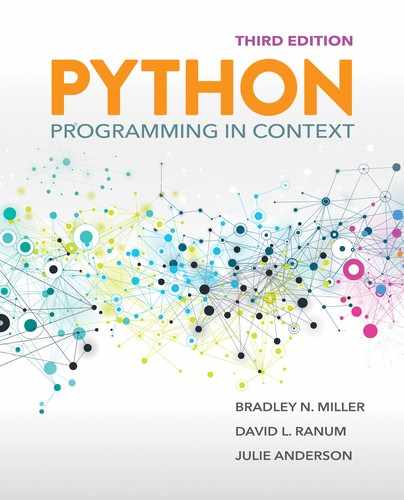11.9 Summary
In this chapter, we designed and implemented a large, multiclass graphical simulation. First, we considered a description of the problem. We picked out the important subjects (nouns) and began to implement classes, one for each. Then, to design a class, we described those things that instances of a class would need to know about themselves (the instance variables) and those things that instances of a class would need to be able to do (the methods). After creating each class, we implemented a function that established many objects, and we let each object perform methods as defined by the initial rules of the simulation. By using random numbers, we were able to provide a degree of uncertainty so that no two runs of our simulation would look the same.
Key Terms
Python Keywords and Functions
Programming Exercises
-
11.1 Modify the simulation so that a
Worldconsists of two kinds of locations, water and land. Fish and plants can live only in the water, and bears can go in the water but only to eat fish. -
11.2 Modify the simulation to give bears an energy instance variable. Each time a bear eats, its energy level increases. Bears should lose energy as they move and breed. If the energy level drops to zero, the bear dies.
-
11.3 Add a
Berryclass so that the bears have another food source. This class should behave much like thePlantclass. -
11.4 Choose another real-world predator–prey ecosystem and implement a simulation.
Design Credits: Calculator Icon made by Smashicons from www.flaticon.com
